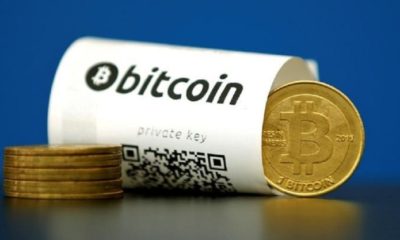US stocks are getting pulled all over the place as investors digest both a wrath of economic data and a chorus of Fed speak that has de-escalated aggressive tightening fears for now. Impressive earnings from UPS and Exxon helped risk appetite early but that faded quickly as traders remain fixated over everything about inflation. For about 10-minutes much of Wall Street took a break to hear the news that Tom Brady announced his retirement.
Equities extended their declines after the ISM manufacturing report and JOLTS data showed inflationary pressures intensified. The ISM, JOLTs, and construction data all support the economy is in a good place, except for the 800-pound inflation gorilla in the room. The ISM prices paid index soared to from 68.2 to 76.1 and the JOLTS data showed the labor market remains super tight as job openings rose to 10.93 million, much higher than the consensus estimate of 10.3 million. Pricing pressures are still ascending at a pace that should concern the Fed and wage pressures are only going to get hotter as the number of job openings increase.
Before the US economic data, a lot of traders were thinking it is time to forget about a half-point rate hike in March, unless inflation gets significantly hotter. Wall Street was starting to lean towards a 25-basis point increase in March, but that won’t remain the base case if wage pressures and prices paid continue to soar. For risk appetite to reassert itself, investors need to be convinced that the Fed will not become too aggressive in tightening policy.
RBA
The Reserve Bank of Australia (RBA) kept rates steady and decided to discontinue its bond buying program this month. The Australian dollar initially declined over the dovish surprise as the central bank decided to take a patient stance with inflation, noting they will continue to monitor it and showed no urgency to deliver rate hikes. The bank made it clear that ending QE does not mean rate increases are imminent.
BOE
The Bank of England is expected to deliver another rate increase, this time lifting rates by 25 basis points to 0.50% and signal that more are coming. The BOE has telegraphed that they will reduce the size of the balance sheet once interest rates are back to the 0.50% level. The ending of bond reinvestments would mean that £25 billion of gilts would not be bought this fiscal year. The bank is getting closer to selling bonds, but that might not happen until the summer.
Oil/Exxon
Crude prices edged lower ahead of the OPEC+ meeting on output and after Exxon’s quarterly update showed the oil giant was ready to significantly increase its investment in new wells. Fears of an OPEC+ surprise has many energy traders locked in profits. OPEC+ is expected to stick to the script and deliver a 400,000 bpd increase next month and when you factor in that many members are struggling to hit their quotas, oil seems poised to head higher. Fears of disruption to supplies will remain elevated given the winter blast hitting the north and the geopolitical risks abroad.
WTI crude seems poised to resume its bullish trend as long as the Saudis don’t pull a surprise at the OPEC+ meeting and make a push for a larger increase over output. The Saudis are seeing US drillers are beginning to invest in new wells and that could trigger some market share fears.
Exxon delivered impressive results as revenue surged over 80% year over year and profit posted the best gain since 2014. The oil giant is going to have a strong year as they continue to focus on cost cutting and buying back shares, while benefiting from a new lower breakeven oil price fell to $41 a barrel. Exxon is boosting its spending on new wells by as much as 45%. The company narrowed its capital expenditure guidance for the year, which still supports a significant investment in new wells.
Gold
Gold is bouncing back as expectations for aggressive global central bank tightening eased after the RBA showed they are in no rush to raise rates and as some traders doubt the Fed will kickoff tightening with a half-point increase. The Fed’s Harker signaled that he currently supports the idea of four 25 basis point increases this year and is not convinced they should start with a 50 bps increase in March.
Gold also got a boost on fears that nonfarm payrolls would have a big miss after White House press secretary Psaki said around 9 million people called out sick in early January.
Gold fell to session lows after the ISM and JOLTS data sparked inflationary fears, sending the 10-year Treasury yield back above 1.80%. Gold is hovering around $1800 but if selling pressure returns, it could get ugly quick as momentum sellers are watching.
Bitcoin
Bitcoin will continue to trade like a risky asset and most likely benefit if central banks continue to show some hesitancy in turning very aggressive with tightening monetary policy. The BOE and ECB rate decisions might have a larger impact on cryptos than normal as Wall Street is looking for a cue on which direction risk appetite is headed. A lot of January data in the US is expected to be soft and that should continue to support the Fed’s growing chorus of members that want an interest rate increase cycle that does not disrupt the economy.
Bitcoin should continue to stabilize here but if it breaks $40,000, that would surprise many traders and could see some bullish momentum.















